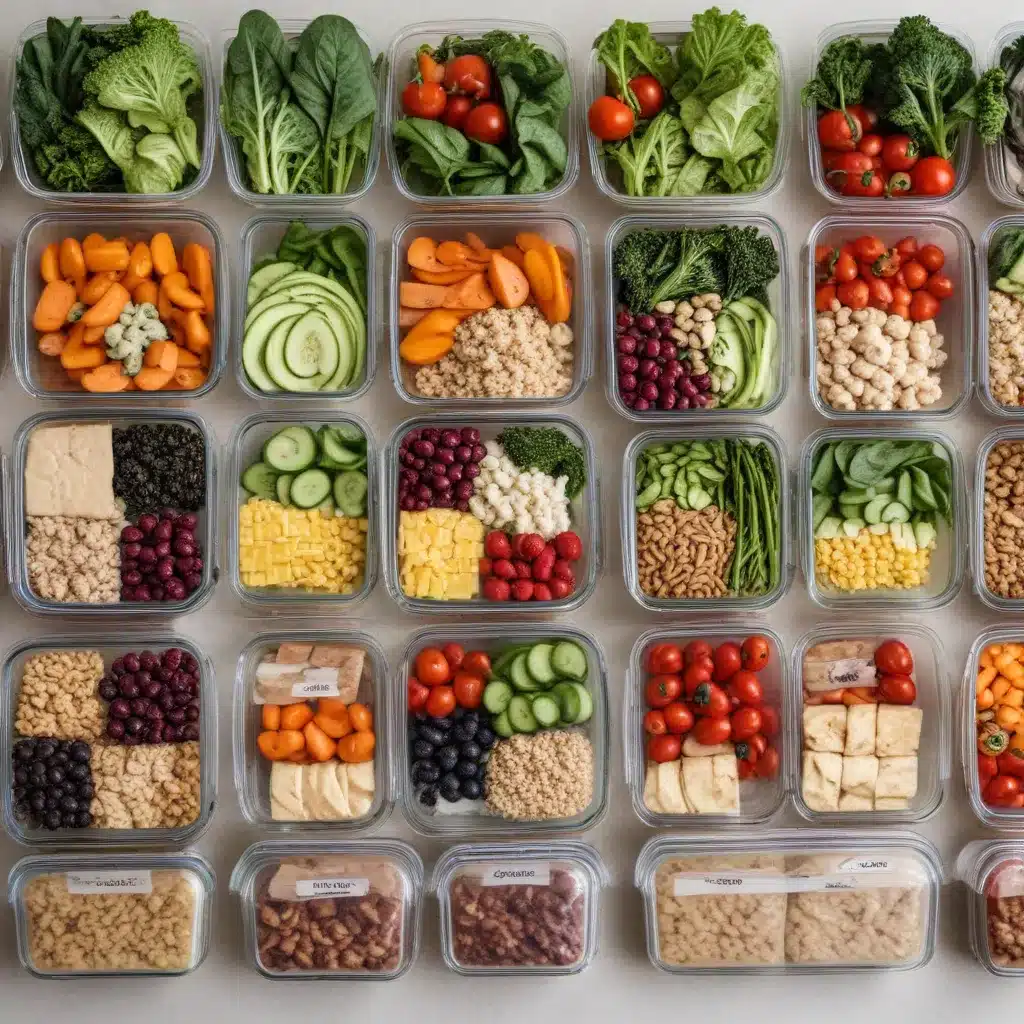
Cultivating a Healthy Relationship with Food Through Intentional Meal Planning
In our fast-paced, distraction-filled world, the simple act of eating has become an afterthought for many. We mindlessly shovel down meals at our desks, in front of the TV, or on-the-go, barely registering the flavors and textures that nourish our bodies. However, reclaiming mealtimes as a sacred ritual can transform our relationship with food and unlock profound benefits for our physical, mental, and emotional well-being.
Welcome to the world of mindful meal prep – a conscious approach to planning, preparing, and savoring our sustenance. As a seasoned culinary professional, I’m excited to share practical tips and in-depth insights that will empower you to cultivate a healthier, more fulfilling connection with the food on your plate.
The Power of Mindful Eating
Mindfulness, as defined by Yogi Fuel, is “paying attention, to the present moment, on purpose and without judgment.” When we bring this same level of conscious awareness to our eating habits, we unlock a world of benefits that extend far beyond physical nourishment.
Improved Digestion and Nutrient Absorption: By slowing down and savoring each bite, we enable our bodies to better recognize and respond to hunger and satiety cues. This supports optimal digestion and ensures we extract the maximum nutritional value from our meals.
Enhanced Emotional Well-Being: Mindful eating has been shown to reduce stress, anxiety, and emotional eating behaviors. By tuning in to our senses and internal experiences during mealtimes, we can better regulate our emotions and foster a more positive relationship with food.
Increased Body Awareness: The practice of mindful eating helps us become more attuned to how different foods make us feel – both physically and energetically. This self-knowledge empowers us to make more informed, intuitive choices that honor our unique dietary needs and preferences.
Reduced Food Waste: When we approach meal preparation and consumption with a mindful, intentional lens, we are less likely to overbuy, overprepare, or overindulge, minimizing food waste and supporting sustainable practices.
Ultimately, mindful eating is not about perfection or rigid rules; it’s about cultivating a gentle, curious awareness that allows us to nourish ourselves in a way that feels truly fulfilling. And the journey begins long before the first bite.
Mindful Meal Planning
One of the biggest obstacles to mindful eating, as shared by Melissa Singh, is the tendency to “multi-task” during mealtimes, eating while distracted by work, television, or other activities. By incorporating mindfulness into the meal planning process, we can set ourselves up for more conscious, enjoyable eating experiences.
Prioritize Meal Prep: As Live Simply Natural notes, meal prepping can be a powerful ally in our journey towards intuitive eating, provided we approach it with flexibility and self-compassion. Instead of rigid, restrictive meal plans, focus on creating a framework that allows for spontaneity and pleasure.
Tune In to Your Cravings: Rather than relying solely on nutritional information or calorie counts, tune in to what your body and taste buds are truly craving. Embracing these intuitive desires can help you make meal choices that are both nourishing and satisfying.
Incorporate Variety: Avoid the trap of repetitive, monotonous meals by planning a diverse array of flavors, textures, and cooking methods throughout the week. This not only keeps your palate engaged but also ensures you’re meeting a wide range of nutritional needs.
Plan for Flexibility: As Goya’s Sreya Vittaldev discovered, the key to sustainable, mindful meal prep lies in building in flexibility. Allow for spontaneous cravings, last-minute schedule changes, and the occasional indulgence without judgment.
Involve Others: Invite your family or housemates to participate in the meal planning process, fostering a sense of shared responsibility and connection around food. Discuss preferences, dietary needs, and creative ideas to make mealtimes a collaborative, mindful experience.
Conscious Cooking Practices
Once you’ve laid the groundwork for mindful meal planning, the next step is to approach the act of cooking with the same level of intentionality and presence. As Melissa Singh emphasizes, “Cook with love. Be intentional with your cooking. Be all there while you make your food.”
Sensory Engagement: Tune in to the sights, sounds, smells, and textures that emerge as you prepare your meals. Notice the gentle sizzle of sautéing vegetables, the aroma of herbs and spices, the satisfying crunch of fresh produce. Engage all your senses to heighten the experience.
Gratitude and Appreciation: As you chop, mix, and assemble your dishes, take a moment to express gratitude for the ingredients, the hands that cultivated them, and the nourishment they will provide. This practice of thankfulness can imbue your creations with a sense of reverence and care.
Mindful Pacing: Resist the urge to rush through the cooking process. Slow down, be present, and allow yourself to fully immerse in each step. This not only enhances the quality of your dishes but also serves as a form of moving meditation, calming the mind and soothing the senses.
Intuitive Adjustments: Pay close attention to how your body and taste buds respond as you cook. Adjust seasonings, cooking times, and techniques based on your intuitive preferences, rather than rigidly adhering to a recipe. This empowers you to make truly personalized, satisfying meals.
Cultivation of Patience: Embracing the mindful cooking journey requires a certain level of patience and self-compassion. Acknowledge that perfection is not the goal; the act of being present and engaged is the true reward.
Savoring the Moment
With your mindfully planned and prepared meals ready, the final piece of the puzzle is to approach eating itself with the same level of consciousness and care. As Lyndi Cohen emphasizes, “Eating mindfully is counter-intuitive in the fast-paced world we live in, a world where our beloved phone is always in our hand and food is something we grab and eat on the go.”
Eliminate Distractions: Make a conscious effort to remove digital devices, televisions, and other potential sources of distraction from your mealtime environment. This allows you to fully immerse yourself in the experience of eating.
Engage the Senses: Slow down and savor each bite, noticing the flavors, textures, and temperatures of your food. Chew thoroughly, allowing the nuances of your meal to unfold on your palate.
Check In with Hunger Cues: Regularly pause and assess your level of hunger and satiety, using the Hunger Scale as a guide. This heightened awareness can help you avoid over-eating or under-eating, fostering a more balanced, intuitive relationship with food.
Share and Connect: If dining with others, consider engaging in mindful conversation or a ritual of gratitude to cultivate a sense of community and presence around the table. This can transform mealtimes into deeply nourishing experiences for the body, mind, and soul.
Self-Compassion: Recognize that the path to mindful eating is a lifelong journey, filled with both triumphs and stumbles. Approach any perceived “failures” with kindness, understanding that progress is not linear, and every mindful moment is a step in the right direction.
As you embark on this transformative journey of mindful meal prep, remember that there is no single “right” way to do it. The beauty lies in tuning in to your unique needs, preferences, and rhythms, and crafting a practice that feels authentic and sustainable for you.
By weaving mindfulness into every aspect of your culinary experience – from planning to preparation to consumption – you’ll not only nourish your body but also reconnect with the deeper purpose and pleasure of eating. Welcome to a world where every meal becomes an opportunity for self-care, self-discovery, and profound nourishment. Happy cooking, my fellow Kitchen Warriors!


